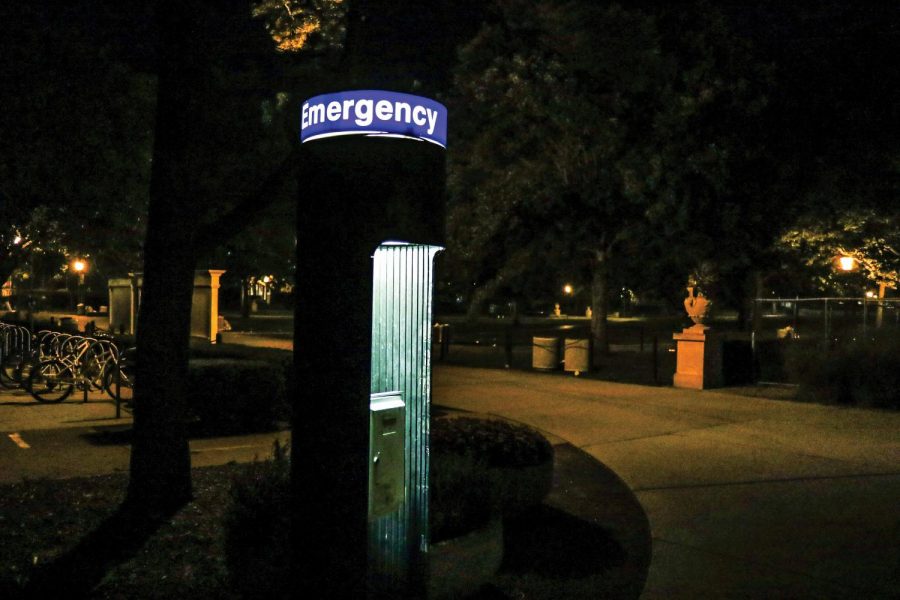University police departments on emergency blue lights on campuses
An emergency phone near the Illini Union on Oct. 14.
October 16, 2017
University campuses across the United States have been developing emergency response systems for students’ safety for years. Likewise, the University of Illinois has strategically placed blue emergency call buttons that have been a life-saver for some students.
With 675 emergency phones on campus and 427 of those being outdoors, students are meant to be given a sense of immediate safety, especially on major walking paths.
“If (the emergency call phones) are visible all throughout campus, people who are considering committing a crime or thinking about targeting somebody, they know they could be caught on camera,” said Patrick Wade, spokesman for the University of Illinois Police Department.
Wade said many of the outdoor blue light call kiosks have, or are in the process of receiving, security cameras. With these cameras, police can completely see what situation is at hand.
“They are a direct line to the front desk to the police department,” Wade said. “Each phone has a unique number. So when our telecommunicators at the police department receive a call from that emergency phone, they know exactly where the call is coming from.”
Get The Daily Illini in your inbox!
Mental health breakdowns are a common call for the police department, said to Wade. Calls are made through the emergency phones in a panic if students are in a mental health crisis, contemplating committing suicide or contemplating hurting themselves.
“A lot of times, if they can reach someone to talk about the crisis, or (we can) offer them resources or get to them before they hurt themselves, that is one of the reasons for having emergency phones,” Wade said.
For students like Katie Walker, sophomore in Media, the lights provide a sense of comfort walking around campus.
“A lot of kids walk on campus. It’s not easy to just get in a car to get to a hospital or something, if need be, or find someone who can help you,” Walker said. “So I think it’s nice to have the buttons.”
At other Big Ten universities, the emergency process, especially involving emergency phone systems, is not the same.
Captain Craig Munroe of the Indiana University Police Department in Bloomington explained that they have 59 emergency blue light cameras for a campus of a similar size, with little issue in crime rates.
“It comes right into the 911 system,” Munroe said. “The operator will pick up the phone and ask if you’re OK and get as much information as possible, and they’ll dispatch the vehicles.”
Munroe said Indiana University has the cameras placed strategically, where people generally walk or in woodsy areas, where there is less access to immediate police assistance.
Of Munroe’s 35 years on the police force at IUPD, he has only experienced one phone call that was a true, panicked emergency. For Indiana University, these phones can be used to call anyone, not only the police department.
Thomas Phillips, chief of police at Northern Illinois University, said their campus has 85 blue emergency lights. However, he noted University of Illinois at Chicago, where he previously worked, has a few hundred.
“When I was in Chicago, we would get (calls) periodically from people walking through campus at night and feel someone is following them,” Phillips said. “We’d get, ‘I’m seeing someone break into a building, you need to get over here.’”
Phillips said typically the calls are either non-emergencies, someone seeing a crime take place or a student asking for service.
“We get a myriad of people who hit that button to say, ‘Where’s my biology class?’” Phillips said.
Phillips stressed the need for the call system on campus for emergencies and an overall feeling of safety. He said the system is a bit outdated, and new apps and technologies are on the rise.
Regardless of size or location of universities, the focus of these emergency call light systems are keeping the students feeling as safe as possible.
“Anything that’s going on, we can get an officer there very quickly. They are available for use 24 hours a day, seven days a week,” Wade said.







